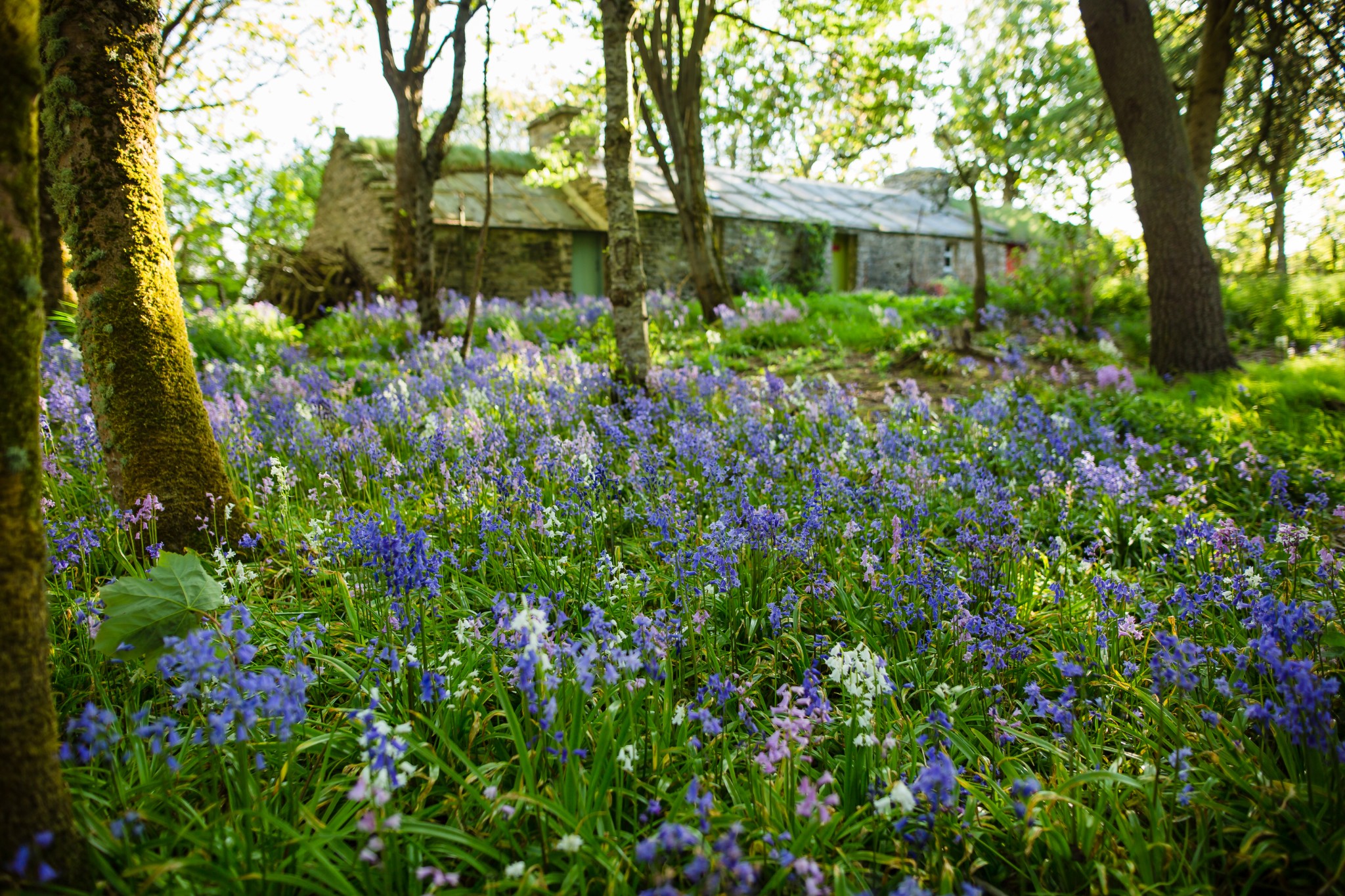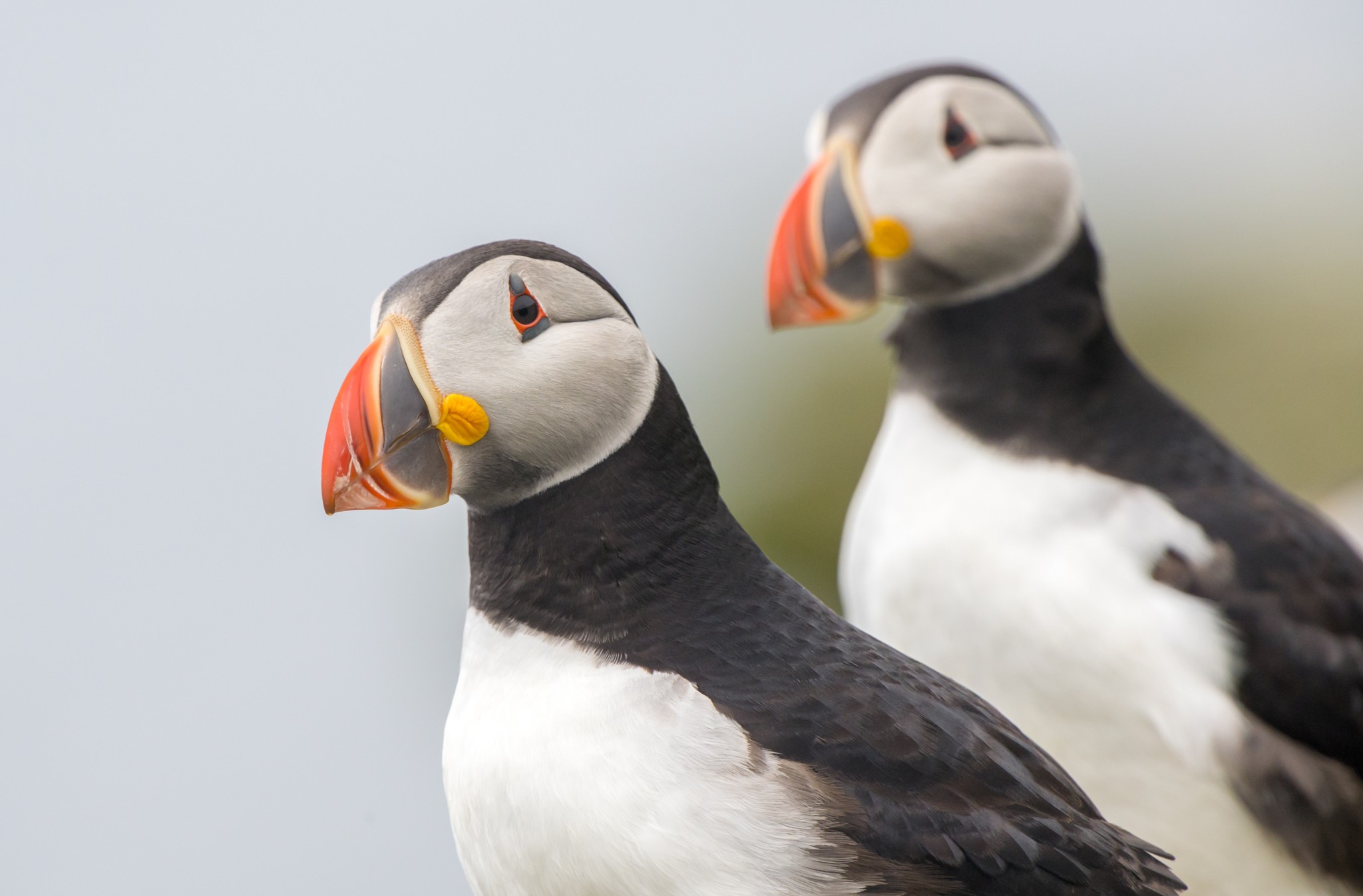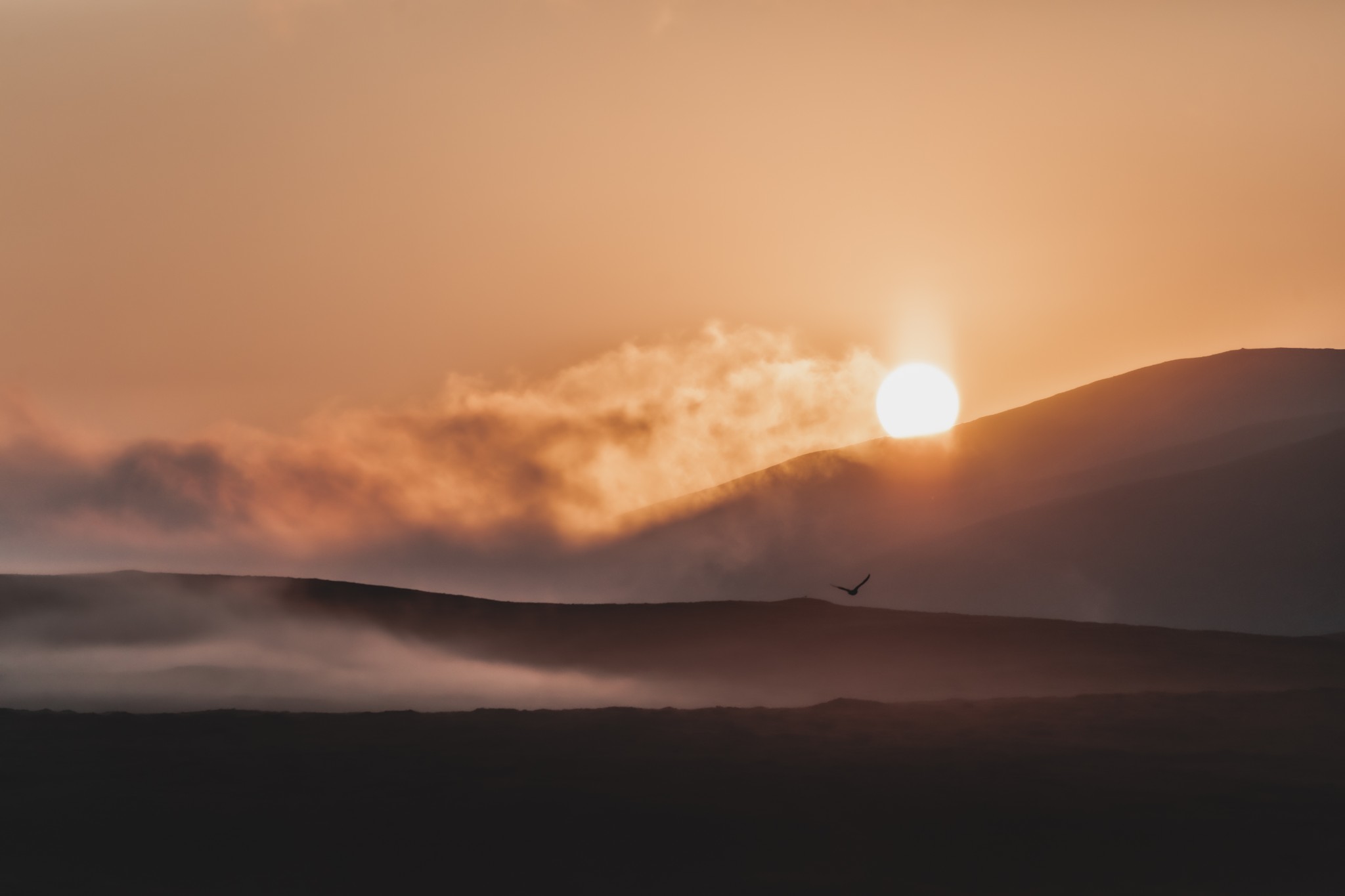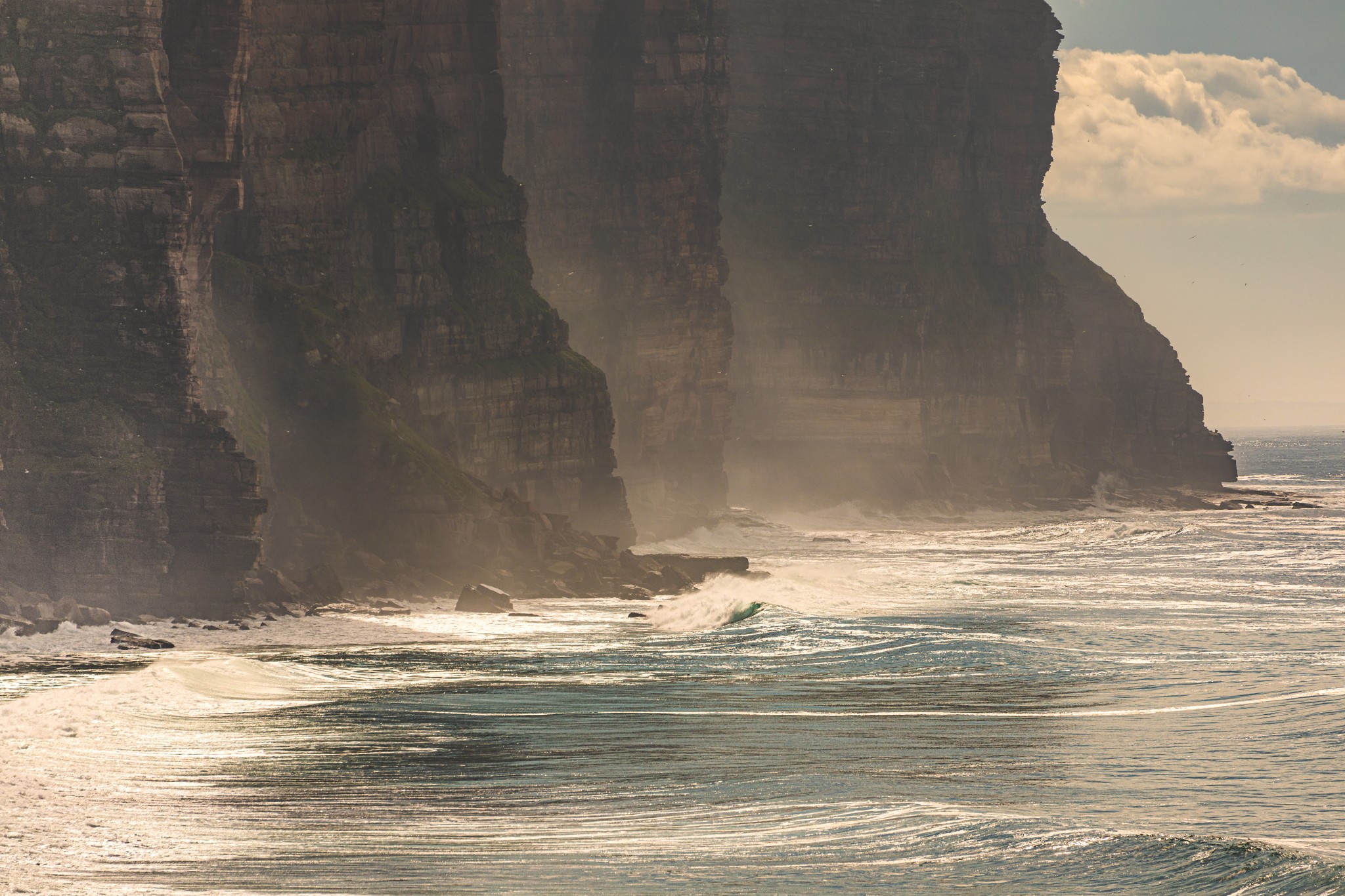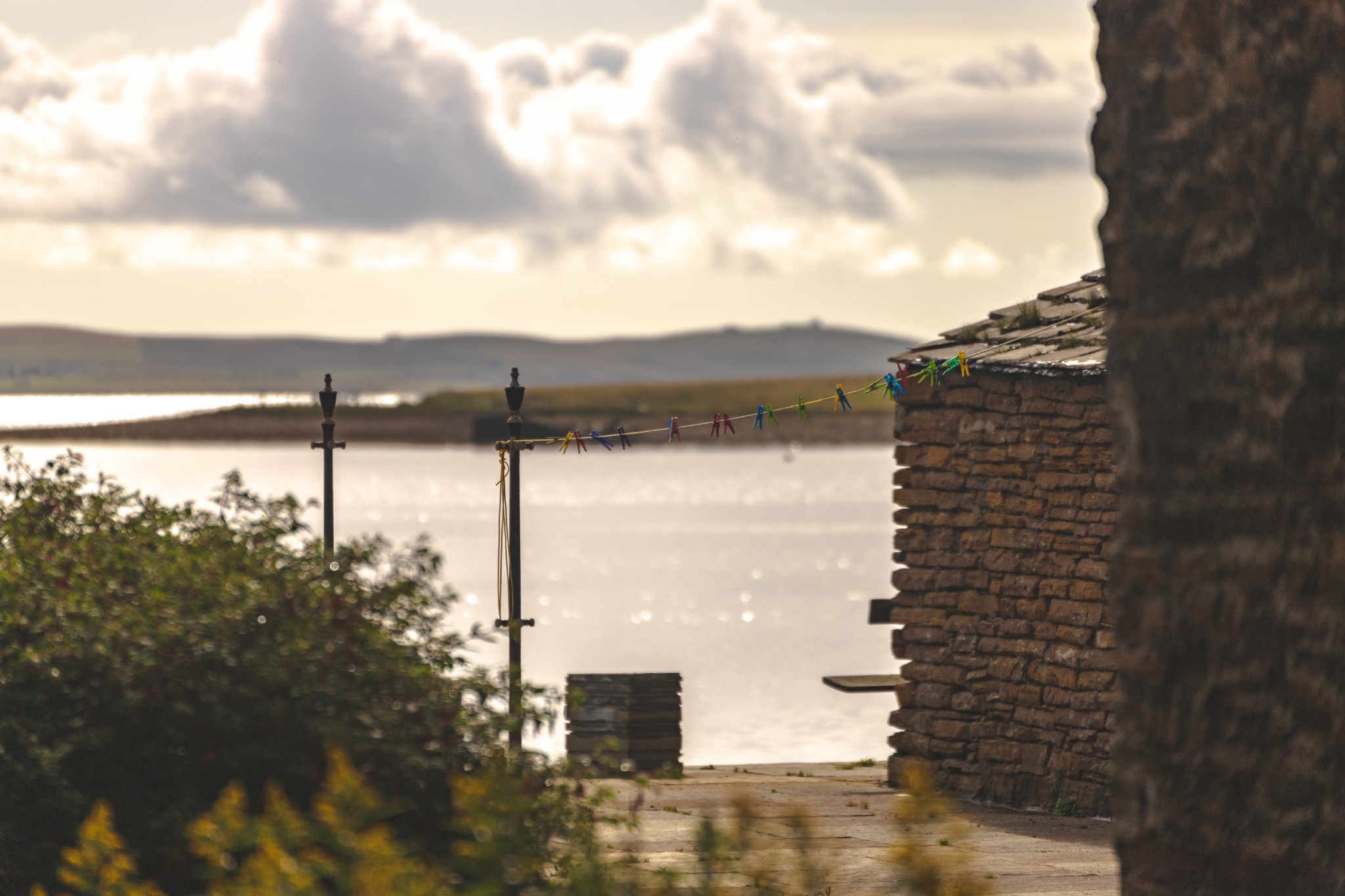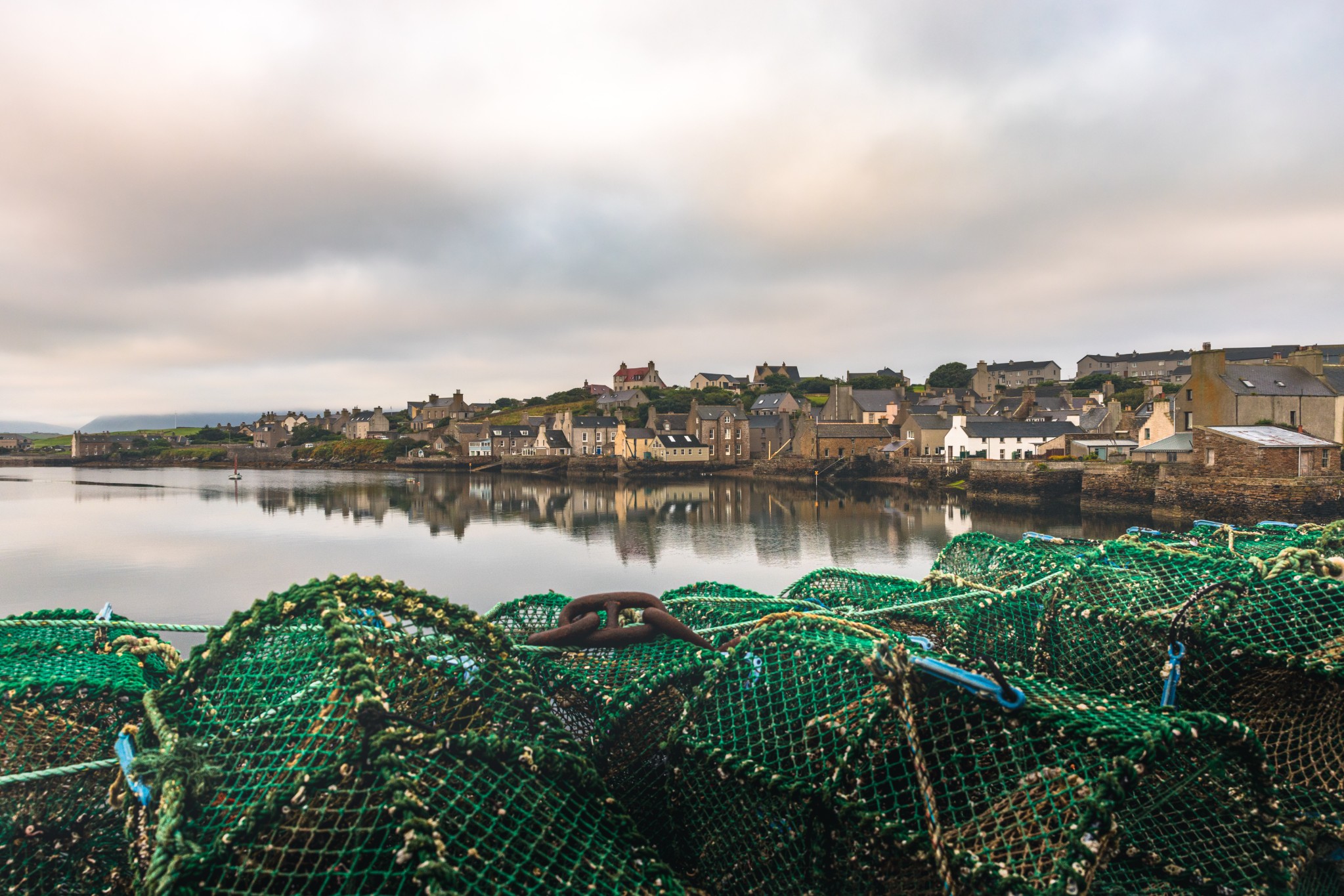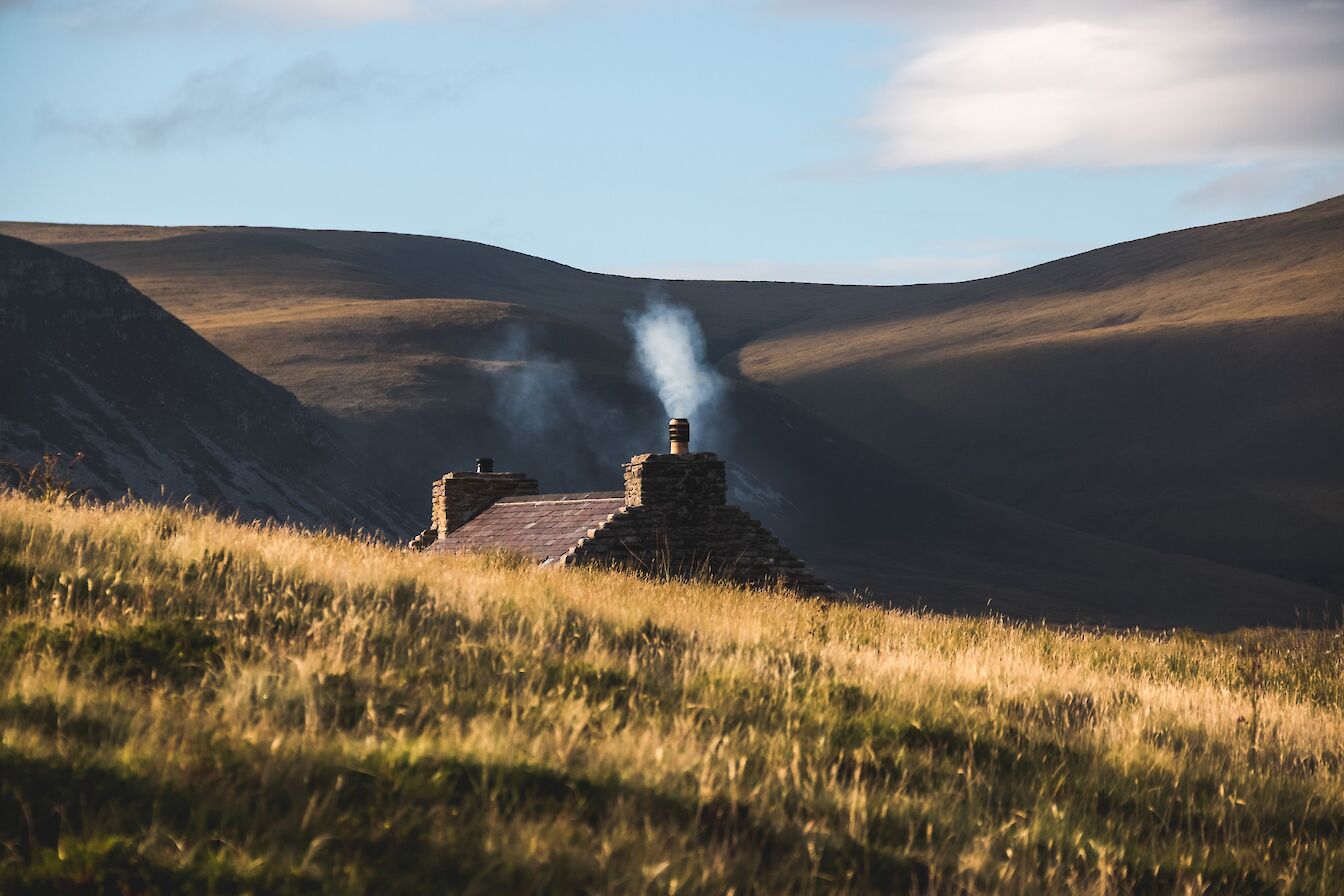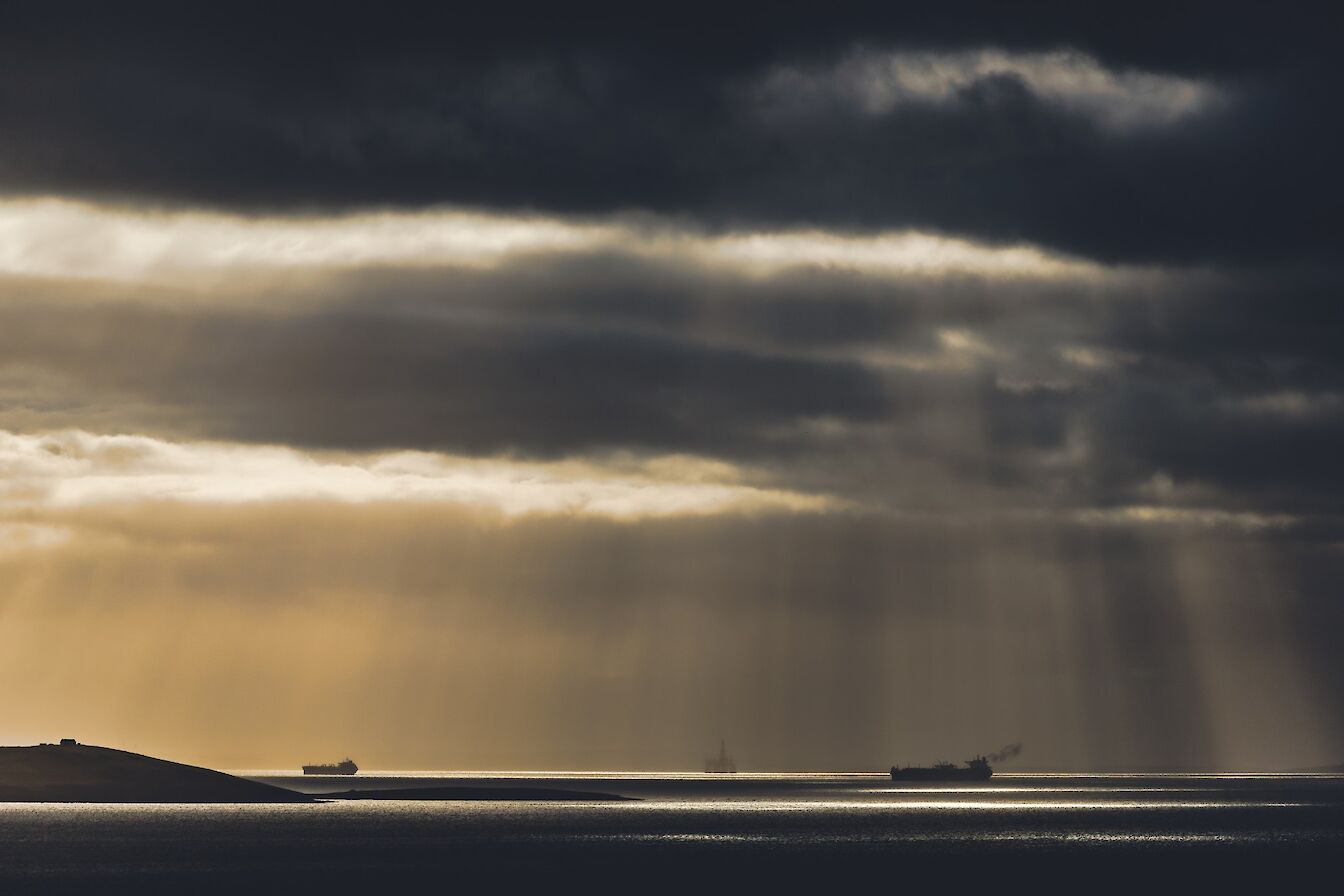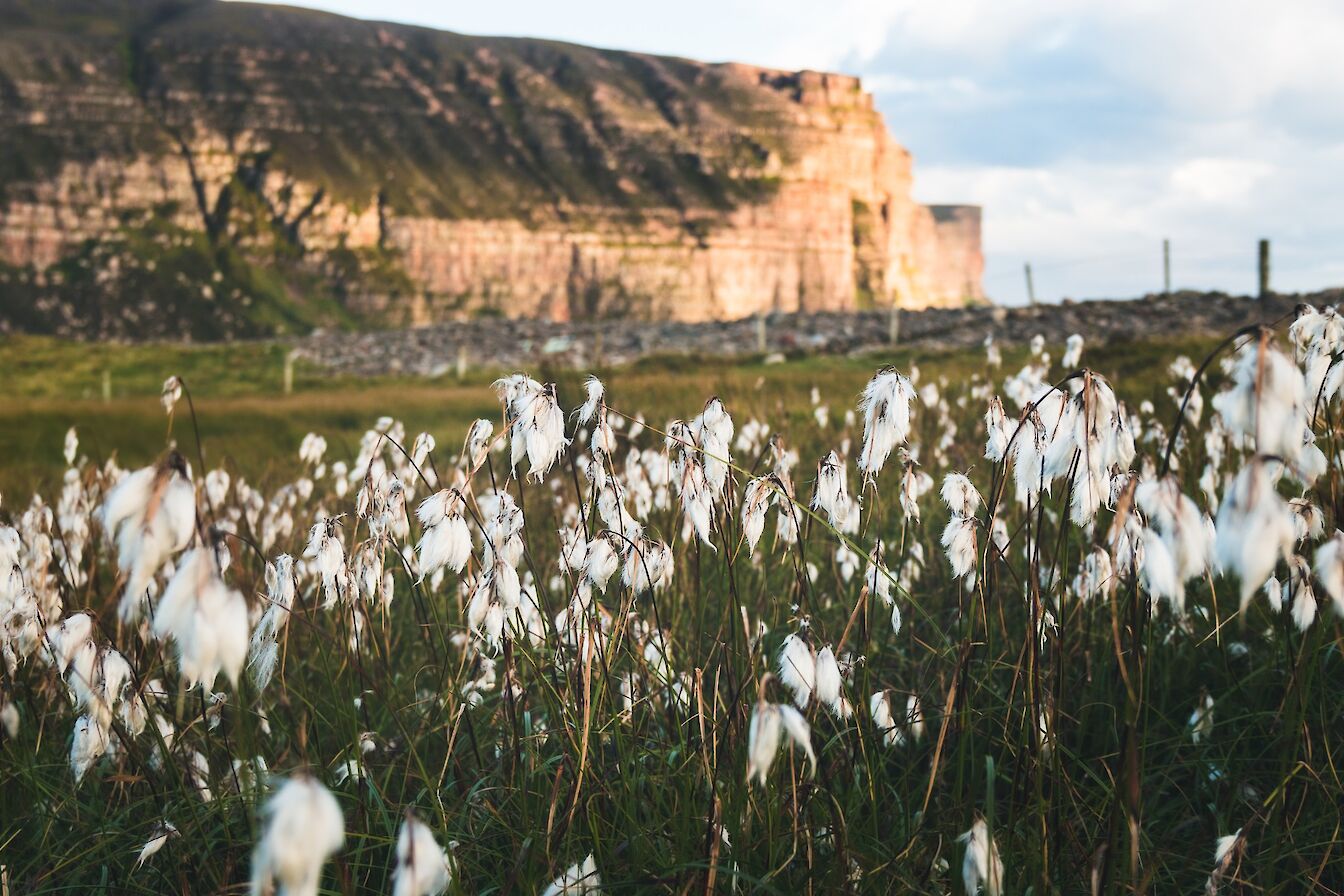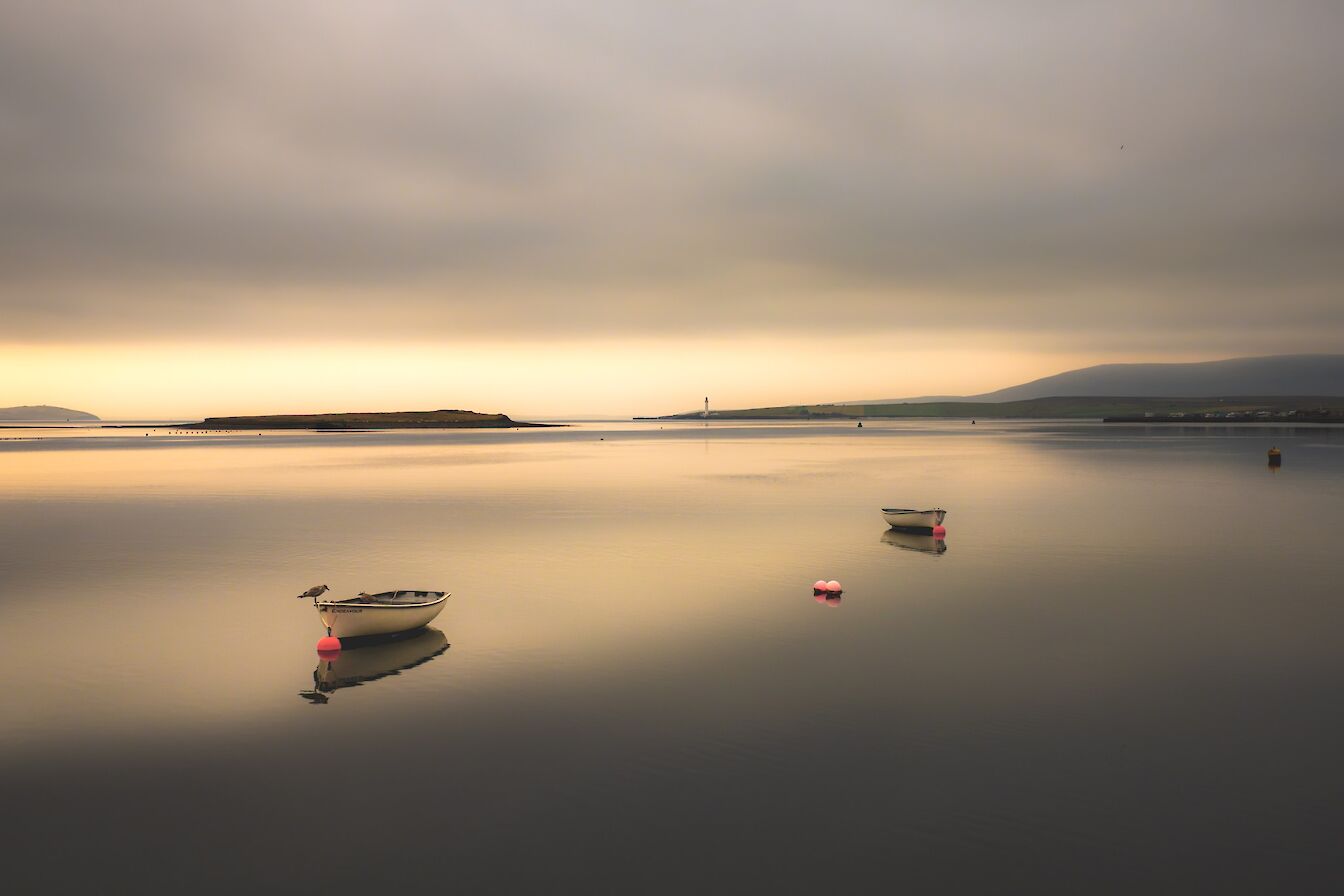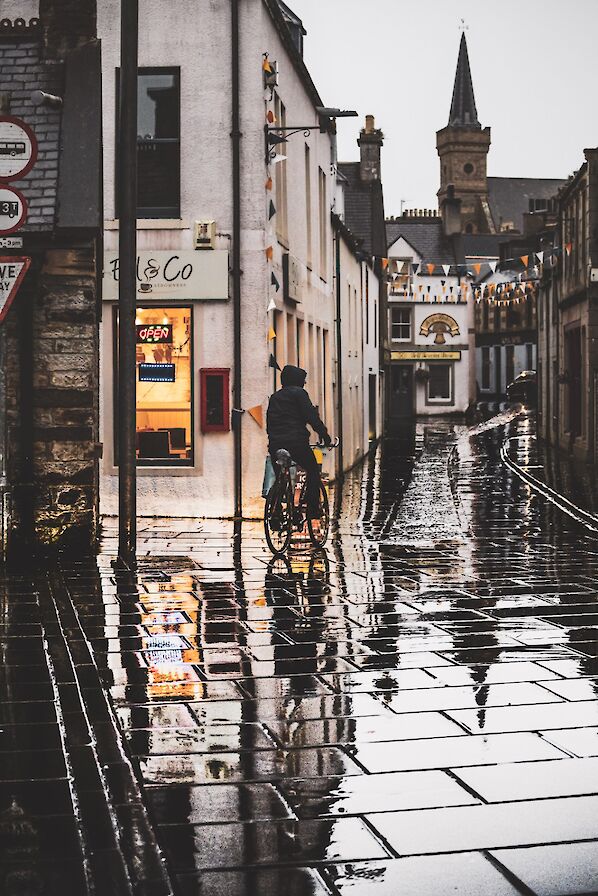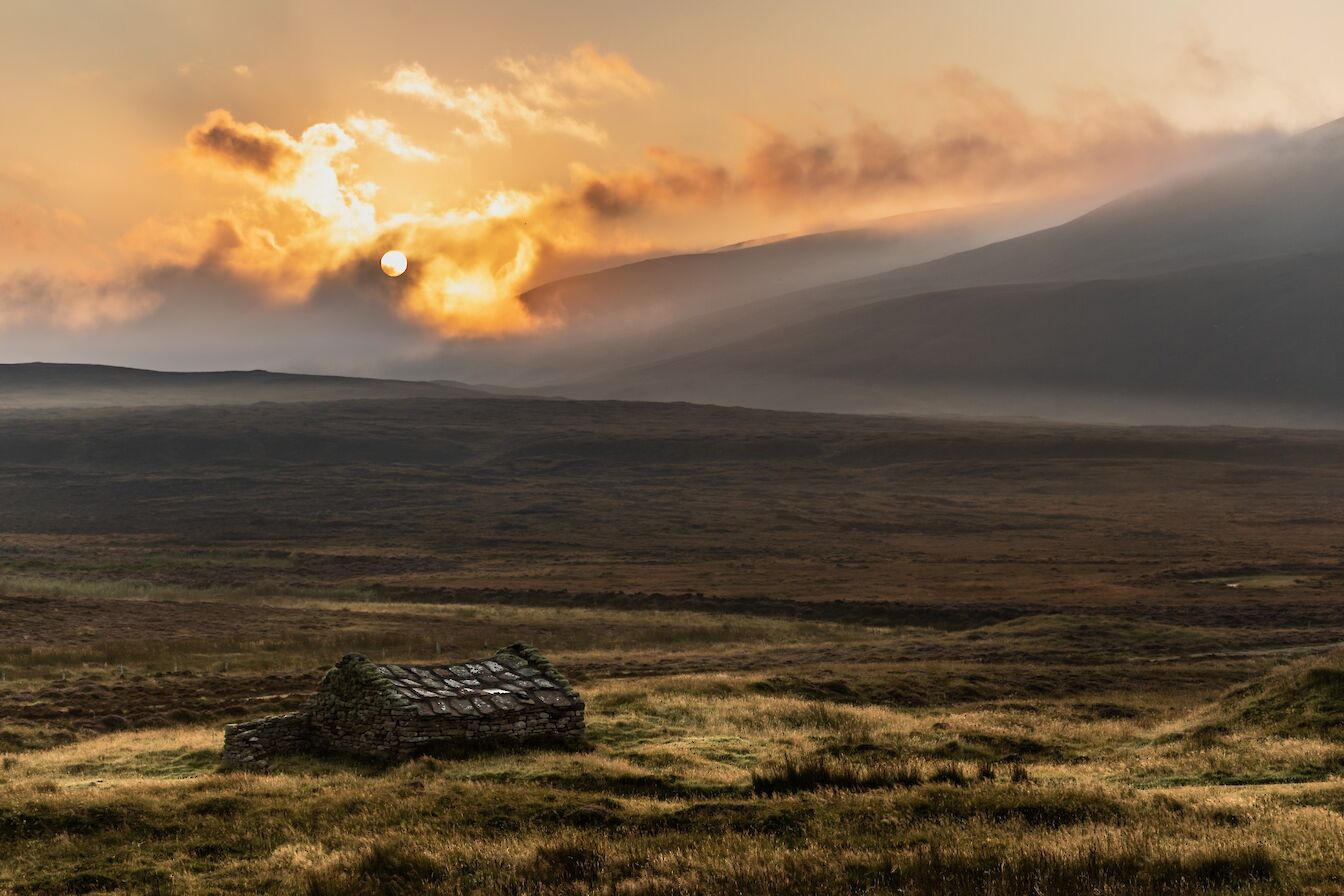Hello and welcome to the June newsletter from Orkney.com.
Midsummer is approaching and everyone in the islands is enjoying the longer days and the beautiful evening light we get at this time of the year.
We know that you can’t be here to enjoy it with us this time, but rest assured that there will be a warm Orcadian welcome waiting for you when it’s safe to travel to the islands once again. You can read more information on the current situation in Orkney via our blog.
Hopefully our newsletter will help keep you up-to-date with life in the islands and bring a smile to your face, wherever you are in the world.
Latest news
Underwater inspiration for island designer
 The clear and cool seas around Orkney have become a second home, and a source of endless inspiration for local jewellery maker, Alison Moore. Her new-found passion for open water swimming has been the catalyst for both physical and emotional change, helping inspire her work in the process. She has also documented the swimming experiences, with a stunning collection of images from beneath Orkney’s waves. Read all about it with our special blog.
The clear and cool seas around Orkney have become a second home, and a source of endless inspiration for local jewellery maker, Alison Moore. Her new-found passion for open water swimming has been the catalyst for both physical and emotional change, helping inspire her work in the process. She has also documented the swimming experiences, with a stunning collection of images from beneath Orkney’s waves. Read all about it with our special blog.
Focused on a green energy future
 Construction work on an innovative tidal energy device destinated for Orkney waters is continuing, despite the challenges posed by the Coronavirus pandemic. Prior to the COVID-19 crisis, Orbital Marine was well underway with building its O2 turbine, a commercial-scale floating tidal energy device with the potential to power more than 1700 homes. But, as we found out, marine energy developers are resourceful, and the exciting project is progressing.
Construction work on an innovative tidal energy device destinated for Orkney waters is continuing, despite the challenges posed by the Coronavirus pandemic. Prior to the COVID-19 crisis, Orbital Marine was well underway with building its O2 turbine, a commercial-scale floating tidal energy device with the potential to power more than 1700 homes. But, as we found out, marine energy developers are resourceful, and the exciting project is progressing.
Musician completes his Orkney triptych
 Orcadian musician Erland Cooper has completed his critically acclaimed trio of islands-inspired albums with the launch of ‘Hether Blether’. The album follows on from 2018’s ‘Solan Goose’ and 2019’s ‘Sule Skerry’, which explored Orkney’s birdlife and relationship with the sea respectively. The new release focuses on the land, its people and its legends, and brings his project to a close. His work has been described as ‘calming and euphoric’, and ‘a meditative, transportive listening experience’, all with Orkney at its heart. We spoke to Erland about his Orcadian influences.
Orcadian musician Erland Cooper has completed his critically acclaimed trio of islands-inspired albums with the launch of ‘Hether Blether’. The album follows on from 2018’s ‘Solan Goose’ and 2019’s ‘Sule Skerry’, which explored Orkney’s birdlife and relationship with the sea respectively. The new release focuses on the land, its people and its legends, and brings his project to a close. His work has been described as ‘calming and euphoric’, and ‘a meditative, transportive listening experience’, all with Orkney at its heart. We spoke to Erland about his Orcadian influences.
A sense of Orkney
 Orkney.com photographer Fionn McArthur has been putting his long lockdown hours to good use by taking a look through his archive of images from the islands. Featuring shots of playful puffins on the cliffs in Westray, ancient standing stones at sunset and the timeless crofting community at Rackwick in Hoy, his collection of photography and words helps bring the sights and sounds of Orkney alive.
Orkney.com photographer Fionn McArthur has been putting his long lockdown hours to good use by taking a look through his archive of images from the islands. Featuring shots of playful puffins on the cliffs in Westray, ancient standing stones at sunset and the timeless crofting community at Rackwick in Hoy, his collection of photography and words helps bring the sights and sounds of Orkney alive.
Join us on Instagram
 We’re still posting images from the islands on Instagram, so if you want to see more from Orkney make sure you follow us. We publish shots every week and you can join in too. Tag your own images and use #VisitOrkney and #LoveOrkney to keep in touch.
We’re still posting images from the islands on Instagram, so if you want to see more from Orkney make sure you follow us. We publish shots every week and you can join in too. Tag your own images and use #VisitOrkney and #LoveOrkney to keep in touch.
Wild Orkney
You might have seen some stunning shots of Orkney on the BBC’s Springwatch over the last few days. That was the work of our regular wildlife contributor, Raymond Besant, who is back to share more about Orkney’s natural world as we head towards summer.
As a wildlife photographer I’m drawn to colour and at this time of year there is colour in profusion. Gorse bushes are vibrant yellow and contrast beautifully with blue skies. On a warm day its coconut fragrance enhances the idea we do have a summer!
But it’s pink that brightens our coastal fringes, with great cushions of thrift hugging the ground and waist-high banks of red campion often dominating the clifftops. Both are easily identifiable, though the name red campion is slightly misleading as most flowers of this species are a deep rich pink colour. Again, however, it’s easy to become confused as there are often stands of white flowers and then variants of everything in-between!
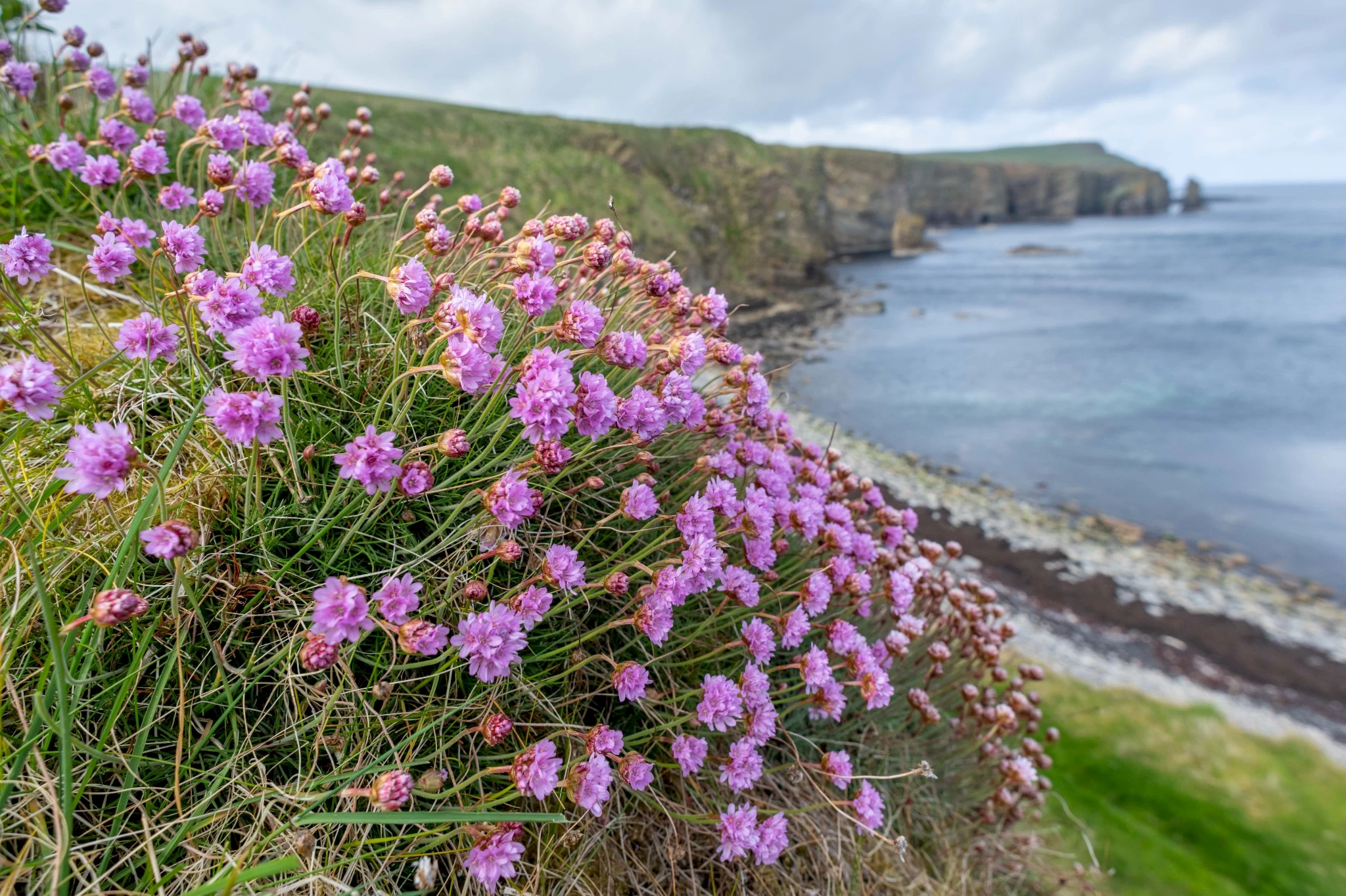
The depth of colour may vary widely but what remains constant is its shape; the flower head being composed of five cleated petals and the stems looking furry or ‘hairy’. One of my favourite places to see this vivid flower en-masse is the clifftop walk at Windwick in South Ronaldsay. The added bonus here is the fantastic fulmar colony that inhabits the vertical cliffs in good numbers. In fact, look out for fulmars nesting amongst what sometimes looks like hanging flower gardens, such is the profusion of growth here.
One of the bonuses of this beautiful flower is that not only can it be found inland as well as on the coast, but its vibrant displays can be seen right through until the end of summer.
The shape of the thrift flower really gives away the kind of environment it has become adapted to. Its ‘cushion’ is hardy and hugs nutrient-poor soils at the tops of salt-soaked cliffs. it really does endure some of the hardest conditions that can be thrown at a plant in Orkney. When in flower though, its wonderful pink flowers contrast beautifully with the marine blue hues of the Atlantic Ocean and are as much a feature of a walk to any of our big seabird colonies as the seabirds themselves.
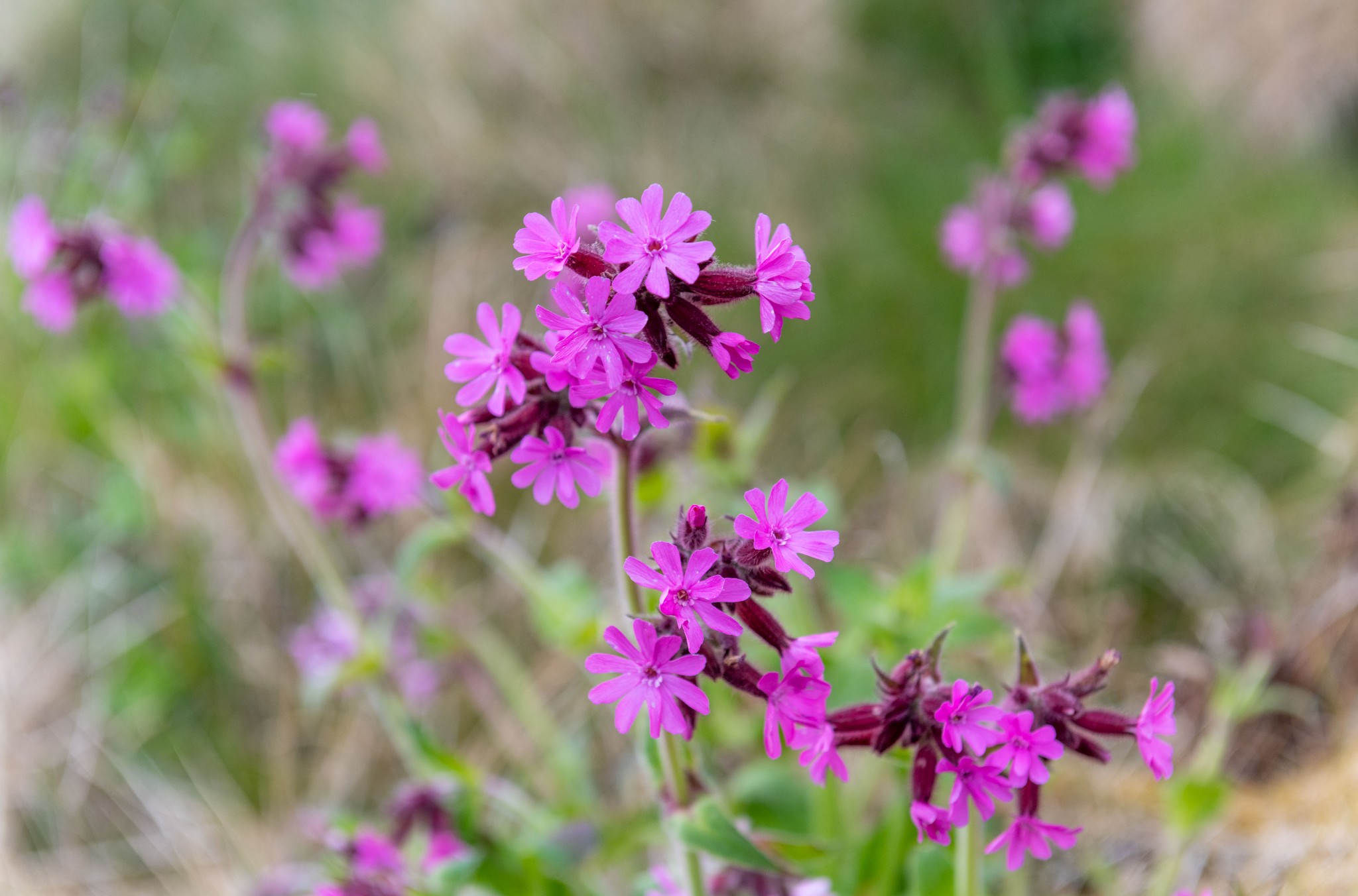
For the full seabird/thrift experience, the RSPB Marwick Head reserve is hard to beat, although thrift is widespread throughout Orkney and flowers can linger into August, along with red campion. A much-overlooked flower is the primrose - perhaps because it is also a feature of many people’s gardens! It is still worth spending some time to properly appreciate its pale sherbet yellow flowers. A notable feature of many of the flowers found in Orkney is that they can be classified as both flowers of ‘dales’, damp valleys where carpets of primroses can be found lining burns, as well as commonly found on coasts.
If you’re lucky you might just see our most popular seabird in amongst this pink profusion - the puffin! In Orkney we have almost come to think of it as a bit of a ‘tourist’ bird, such is its popularity with visitors and its adornment of mugs and t-shirts alike, but it’s not hard to see why. Its bright orange feet and colourful beak contrast beautifully with its smart black and white plumage. But I think it’s more than this; puffins can be unusually confiding and so we are often able to spend more time admiring them than a small brown bird quickly disappearing into bushes.
People often remark to me ‘oh I didn’t know they were so small!’ and they really are pint-sized. What they lack in stature they certainly make up for in character. Sit long enough and you’re bound to see some classic puffin behaviour, either carrying a beak full of nesting material for its underground burrow or some social interaction, tapping its beak against another puffin beak, fast enough to sounds like castanets in a behaviour known as ‘billing’. Once a pair starts, others find it hard to resist and often join in!
However, part of the beauty of visiting a seabird colony isn’t focusing on one bird but the overall experience, soaking up as much of the sights, sounds and smells as you can. Seabird colonies provide easy birdwatching and it’s possible to see the majority of our species in one day, all inhabiting slightly different niches along the shore and cliffs. A good ‘haul’ would include Arctic terns, great and Arctic skua, fulmar, shag, raven, a peregrine falcon if you’re lucky as well as gannets and all the auk species.
One such place to experience this is the RSPB North Hill reserve in Papa Westray. Not only is it (in my opinion!) the best place to see flowering Scottish primrose, it is also one of best places to photograph puffins in Orkney.
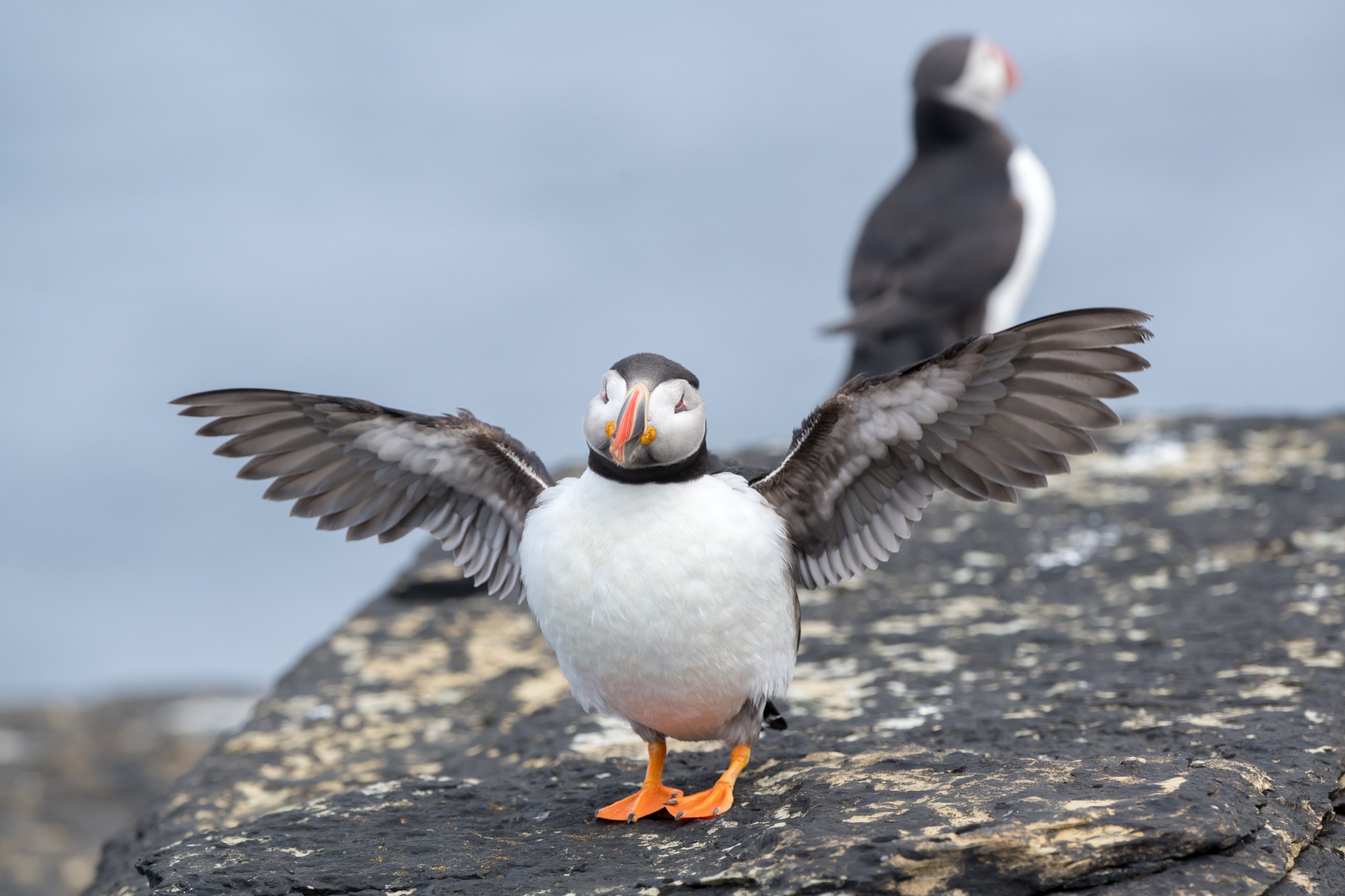
Often a problem with seabird photography at the big sites is the lack of accessibility in being able to see the birds close-up, and more crucially to be able to photograph them at eye level instead of looking down on them. The ledges at North Hill provide such an opportunity for all our auk species - common and black guillemots, razorbills and of course puffins.
The Castle o’Burrian in Westray can claim to be the best site for puffins in Orkney and it can certainly be spectacular, especially in the evenings late in the summer once parents are actively coming and going bringing fish in for their chick. At the moment though, we might have to content ourselves with seeing the smaller numbers dotted around the coast where we can still access local walks. Picking them out amongst the thousands of common guillemots at Marwick Head can be a little daunting but they are definitely there! A better bet is the cliffs on the east side of the Brough of Birsay where one or two individuals are almost guaranteed.
Just check the tide times before you head across so you don’t get caught out on your return!
Find out more about Raymond’s work via his official website. You can also find him on Facebook, Twitter and Instagram.
His new book, 'Naturally Orkney Volume 2' is out now, focusing on Orkney's coastline and all the sights and species that can be found there. You can order your copy online.
Focus on photography
With the islands currently out of reach to most people, photography is the perfect way to experience Orkney at the moment. Our latest featured photographer is Ally Velzian, an island exile who makes regular trips home.
I lived most of my life on Orkney, where my Norse family name originates from, and my love of taking pictures began. It started with taking photographs of friends and family in the 80s and 90s, before getting hooked on landscape photography when I purchased my first DSLR in 2004.
My photography is constantly evolving and I am always learning, and I suspect I always will be. Taking photographs has forced me to be mindful and present, a life skill that has totally transformed both my mental and spiritual wellbeing as well as developing my photography vision.
I have been using Canon equipment since 2004 but have recently sold most of it and moved over to Fujifilm. I purchased the Fujifilm XH1 with the 16-55mm f/2.8 & 55-200mm f/3.5-f/4.8, which is great fun to use, but I have kept the original Canon 5d, as when coupled with any prime lens it is still my favourite set up.
Inverness-shire has been home since 2001 but I always look forward to visiting my hometown of Stromness and especially love spending time in my wife’s family’s cottage at Rackwick in Hoy, which is my favourite place to photograph in the UK.
Last year, I started shooting weddings for the first time, which I thoroughly enjoyed. I also do family, lifestyle portraiture and enjoy testing myself with street photography when visiting my son in Edinburgh.
I enjoy finding the less obvious, the hidden scenes, things that most people just walk past. I seek out photographs that provoke emotion and feeling and Orkney is one of the best places in Scotland to provide that. Be it the majestic cliffs, extraordinary seas, awe-inspiring skies, quaint streets, ancient sites, or luscious farmlands, it really is a photographer’s dream.
See more of Ally’s work via his official website, and on Instagram. All Ally’s Orkney images above are available to buy as prints – get in touch with him to find out more.
And finally...
Thank you for taking the time to read our latest newsletter. We hope it has brought a small slice of island life to your inbox.
Remember, we’re always keen to hear from you too - share your news, views and comments on the newsletter, Orkney.com and your Orkney experiences with us on Facebook, Twitter, Instagram or E-mail.
We'd also love to know what you'd like to see from Orkney in the coming weeks and months. Share your ideas with us and we'll try our best to help.
In the meantime, it's cheerio from Orkney, for now.
The Promoting Orkney project has been part financed by the Scottish Government and the European Community Orkney LEADER 2014-2020
